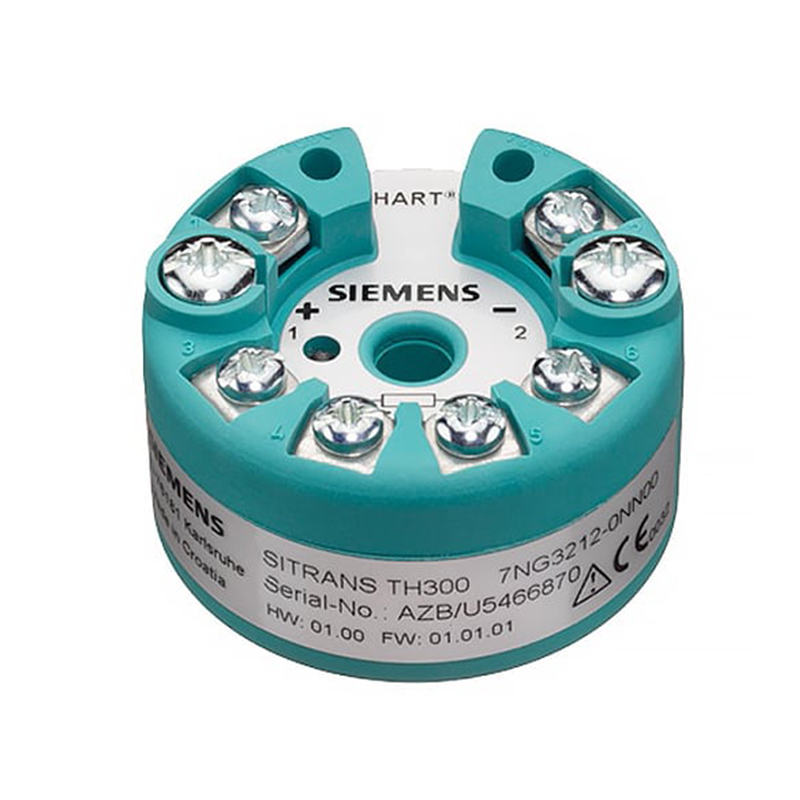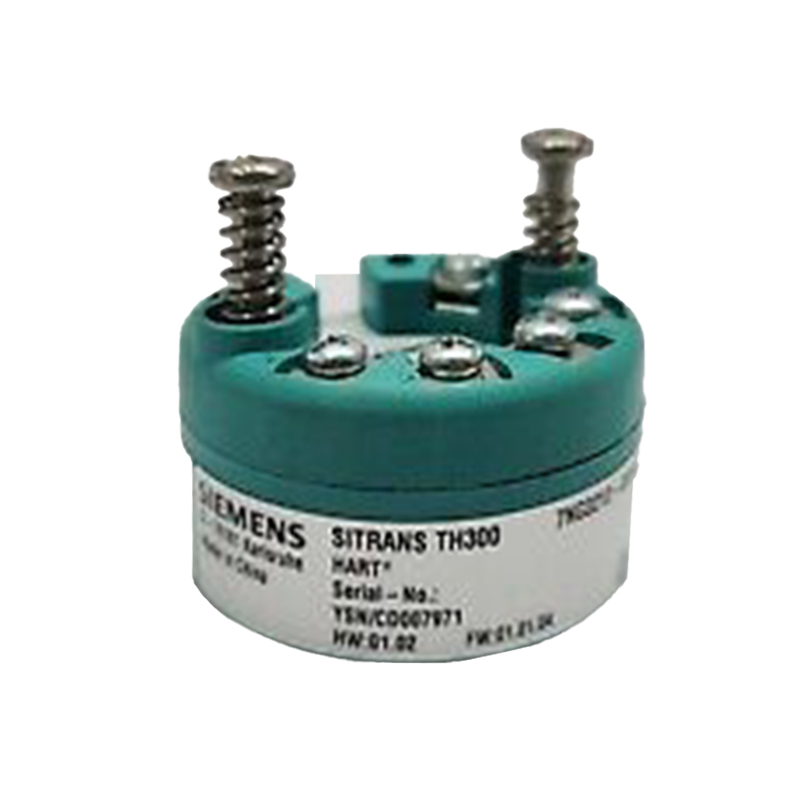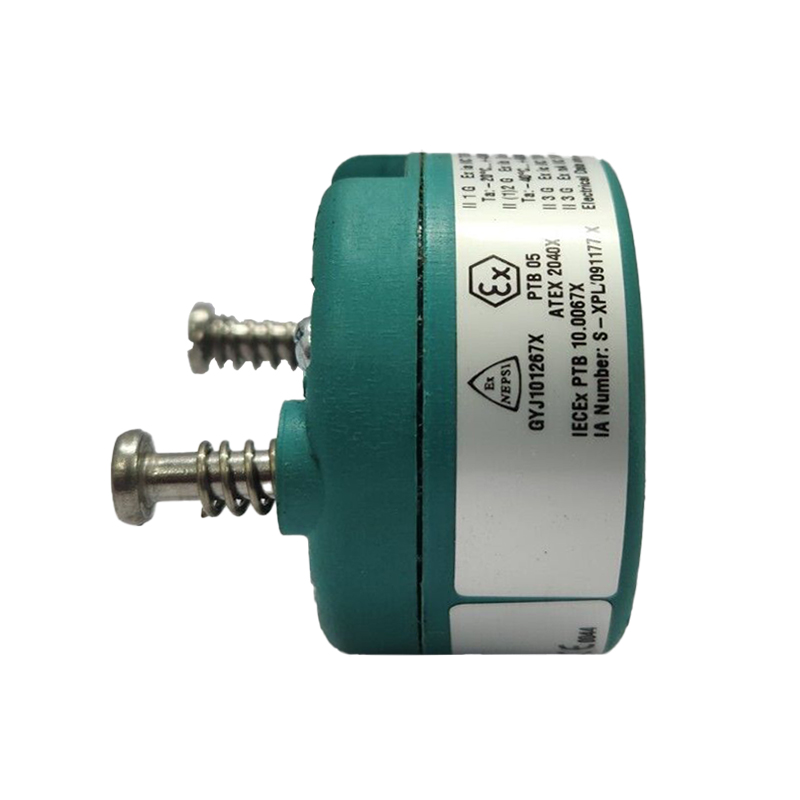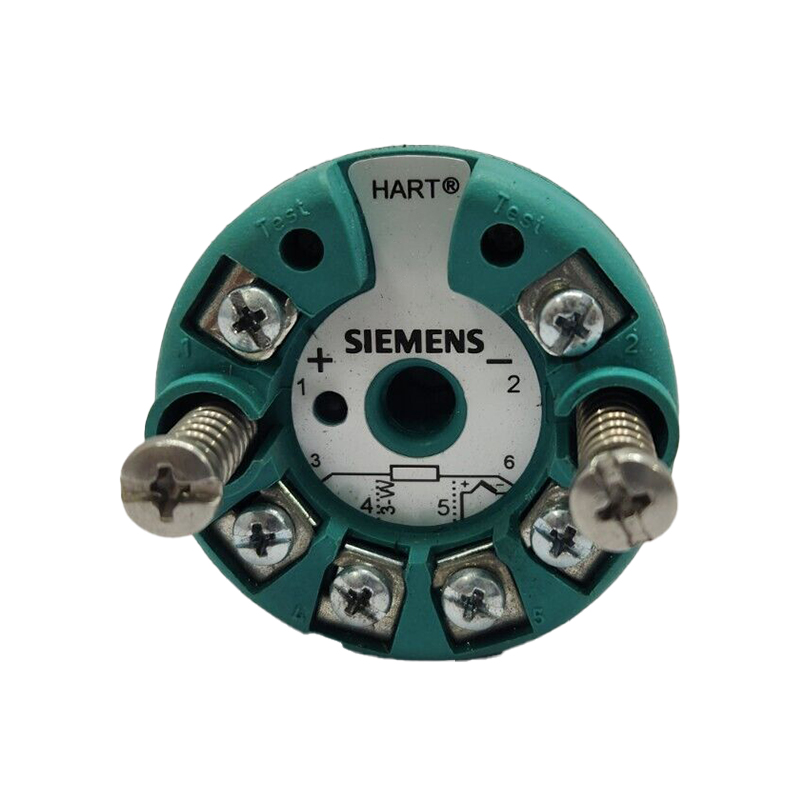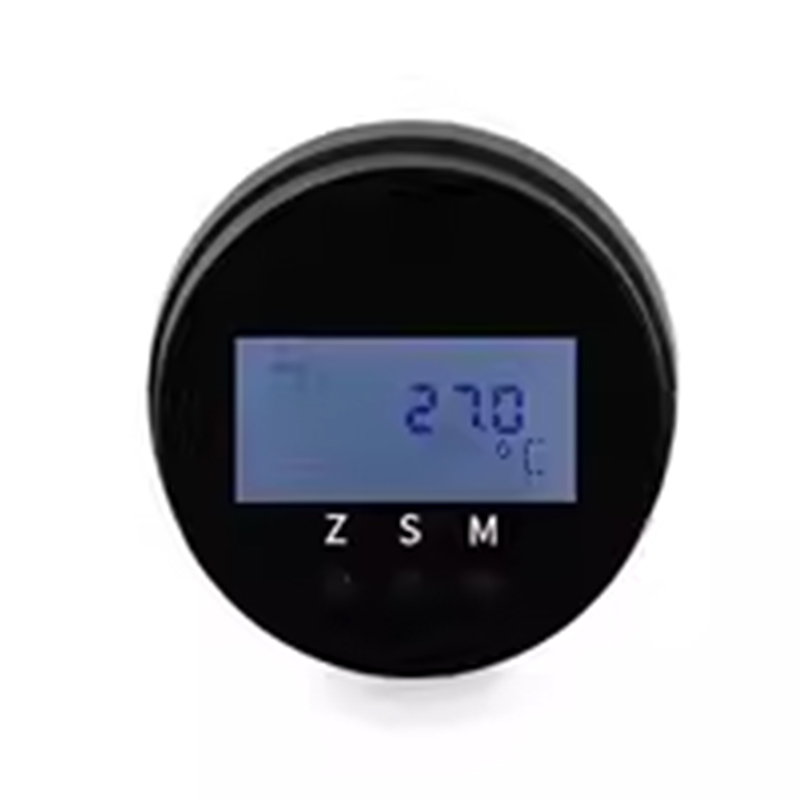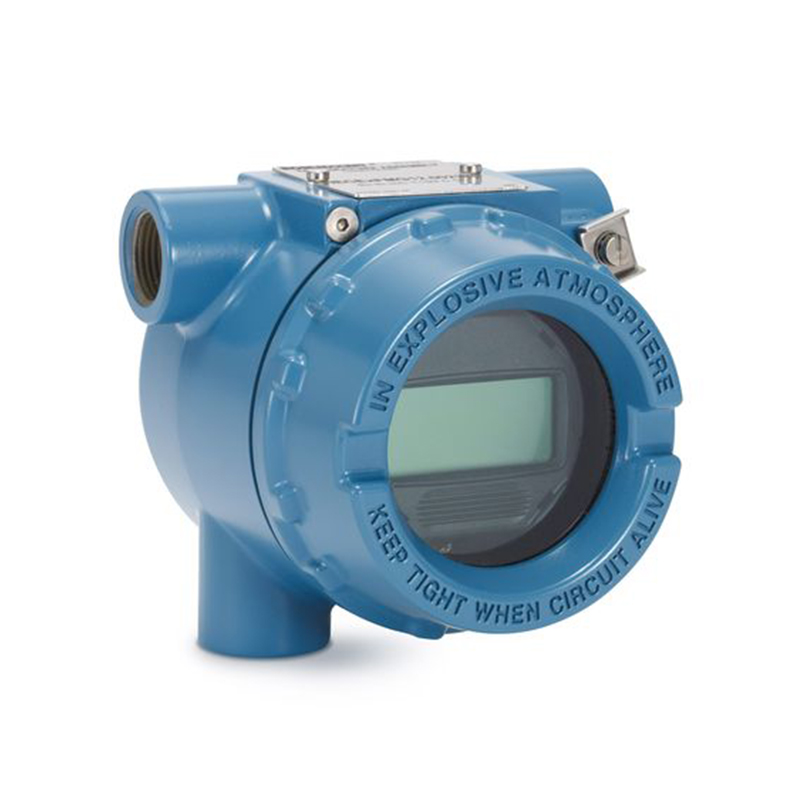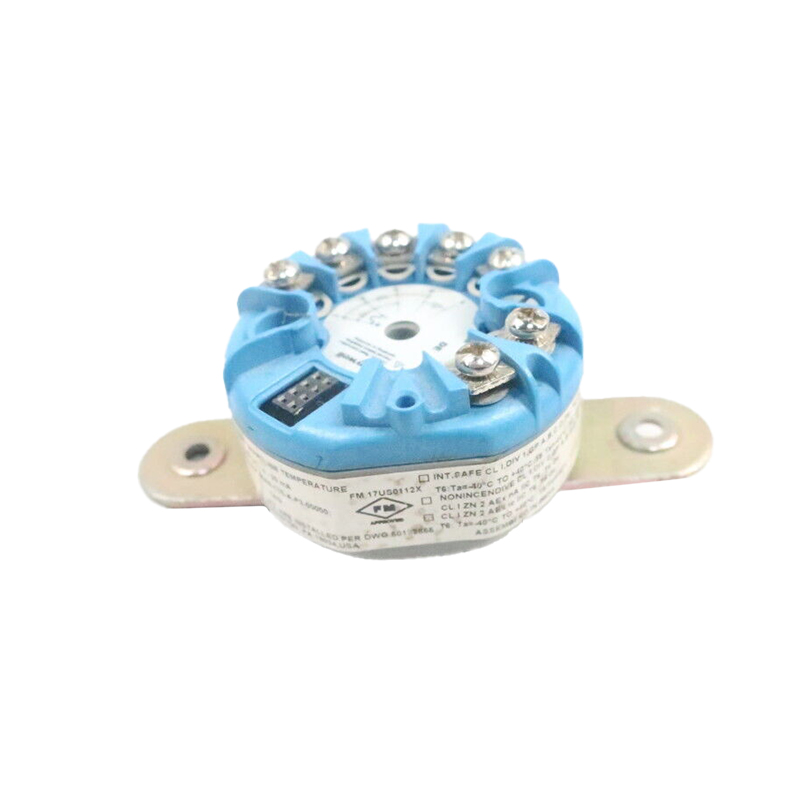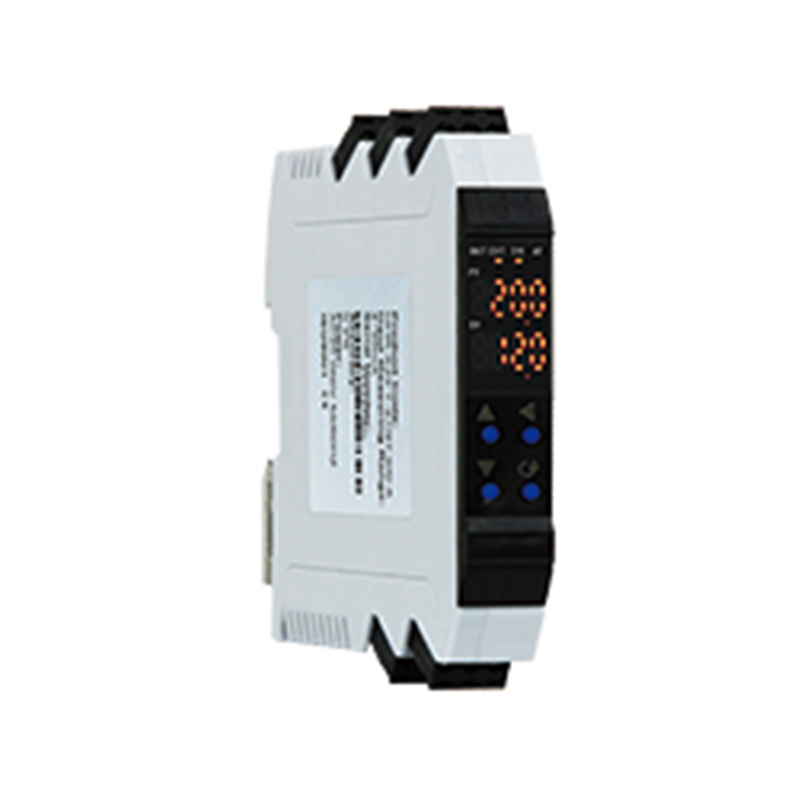Features
- Measures temperature with a linear output signal
- High accuracy across entire ambient temperature range
- Reduces plant noise
- Alarm signal for sensor break or short-circuit according to NAMUR 43
- Electromagnetic compatibility (EMC) according to DIN EN 61326 and NE21
- Save expensive compensation cables with internal reference junction
- Galvanic insulation for accuracy and safety in thermocouple applications
- Single- or dual-point trim
- Custom characteristic curve for application of non-standard sensors
- Difference- and average measurement
- Extensive diagnosis: e.g. drag indicator and time meter
- Set of output current for simulation
- Explosion protected variants for US, Canada and Europe
- Rugged design, fully potted electronics
Applications
- Detection, conversion and transmission of temperature in industrial automation control
- In the field of environmental monitoring, the measurement and transmission of atmospheric temperature, water temperature, ground temperature and other parameters are realized
- Used in weather stations, hydrological stations, geological exploration and other fields
- In the field of medical equipment, it realizes the monitoring and transmission of patient body temperature.
- Applied to the cold chain logistics industry to monitor and record the ambient temperature of logistics vehicles and cold storage
Specification
| Input | |
| Resistance thermometer | |
| Measured variable | Temperature |
| Sensor type | |
| • to IEC 60751 | Pt25 … Pt1000 |
| • To JIS C 1604; a = 0.00392 K-1 | Pt25 … Pt1000 |
| • to IEC 60751 | Ni25 … Ni1000 |
| • Special type | over special characteristic (max. 30 points) |
| Sensor factor | 0.25 … 10 (adaptation of the basic type, e.g. Pt100 to version Pt25 … 1000) |
| Units | °C or °F |
| Connection | |
| • Standard connection | 1 resistance thermometer (RTD) in 2-wire, 3-wire or 4-wire system |
| • Generation of average value | 2 identical resistance thermome- ters in 2-wire system for genera- tion of average temperature |
| • Generation of difference | 2 identical resistance thermome- ters (RTD) in 2-wire system
(RTD 1 – RTD 2 or RTD 2 – RTD 1) |
| Measuring range
Min. measured span Overload capability of the input Input resistance Characteristic curve |
-10 … +70 mV
-100 … +1100 mV 2 mV or 20 mV -1.5 … +3.5 V DC 1 MΩ Voltage-linear or special charac- teristic |
| Output | |
| Output signal | 4 … 20 mA, 2-wire with communi- cation acc. to HART Rev. 5.9 |
| Auxiliary power | 11 … 35 V DC (to 30 V with Ex) |
| Max. load | (Uaux –11 V)/0.023 A |
| Overrange | 3.6 … 23 mA, infinitely adjustable (default range: 3.80 mA …
20.5 mA) |
| Error signal (e.g. following sensor fault)
(conforming to NE43) |
3.6 … 23 mA, infinitely adjustable (default value: 22.8 mA) |
| Sample cycle | 0.25 s nominal |
| Damping | Software filter 1st order 0 … 30 s (parameterizable) |
| Protection | Against reversed polarity |
| Electrically isolated | Input against output (1 kVeff) |
| Measuring accuracy | |
| Digital measuring errors | See Table “Digital measuring errors” |
| Reference conditions | |
| • Auxiliary power | 24 V 1 % |
| • Load | 500 Ω |
| • Ambient temperature | 23 °C |
| • Warming-up time | > 5 min |
| Error in the analog output (digi- tal/analog converter) | < 0.025 % of span |
| Error due to internal cold junction | < 0.5 °C (0.9 °F) |
| Influence of ambient temperature | |
| • Analog measuring error | 0.02 % of span/10°C (18 °F) |
| • Digital measuring errors | |
| – with resistance thermometers | 0.06 °C (0.11 °F)/10°C (18 °F) |
| – with thermocouples | 0.6 °C (1.1 °F)/10°C (18 °F) |
| Auxiliary power effect | < 0.001 % of span/V |
| Effect of load impedance | < 0.002 % of span/100 Ω |
| Long-term drift | |
| • In the first month | < 0.02 % of span |
| • After one year | < 0.2 % of span |
| • After 5 years | < 0.3 % of span |

